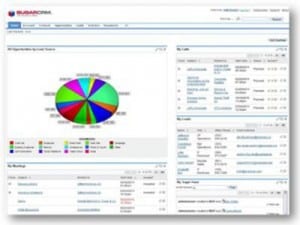
Merger & Acquisition Integration is hard work, but the rewards can be significant. Fortunately, we can accelerate the first hundred days to gain rapid benefits.
Anyone who has done M&A work knows it can be difficult. Mergers and Acquisitions involve integrating the people, existing processes, technology, assets, products/services, cultures, and a whole host of other key items. None of this effort is trivial. Mix in aggressive TSA (Transitional Service Agreement) terms from an acquired divested entity, and the complexity can be daunting.
Many of the key reasons given for M&A activity include the following [FN1]:
- Synergies
- Growth
- Supply Chain Improvements
- Eliminating a Competitor
M&A Integration Struggles
A Google search quickly shows that many M&A integrations are not considered successful. For the M&A post-acquisition portion in particular, degree and speed of integration have been found to be key components of success [FN2]. Integration speed, especially in the first hundred days, has become a critical norm [FN3].
“[T]he first 100 days is when all the critical actions should be launched, as this is the outer limit of employee enthusiasm, customer tolerance and Wall Street patience. ‘If your transition is not progressing along a hundred-day critical path, you are behind the power curve’ PriceWaterhouseCoopers is reported to go further in suggesting a 100-day target for the entire integration process! ‘Speed’ has become a central message from consultants for post-acquisition integration, and focusing upon the First 100-Days has become de rigueur.”
Because of this “need for speed” in combining organizations, cultures, processes, systems, and the various assets of the M&A entity, you especially need to have the foundation’s building blocks in place.
Accelerating M&A Integration – Technology, Processes, and Synergies
When considering M&A activities, technology is generally a key component of the integration. For full, longer-term integration, you need to incorporate the target M&A entity completely into existing systems.
However, you can begin operating with the newly acquired entity early. If you are on SAP’s ERP application (ECC or S4HANA) and treat the acquired entity as an external vendor during the integration period, their products, services, and exposure to the new company processes can be carried out early in the first hundred days. Please keep in mind that this is not full integration; rather, it is a bridge step to begin realizing the benefits and advantages of the acquisition almost immediately.
With our subscription management solution built on top of SAP’s Best Practices, which contains specialized bundling and third-party processing capabilities, you have an outlet for joint go to market execution while company integration issues are resolved. You should note here that you do not have to use the recurring billing portion of our processes to integrate your acquisition. Because the bundling and processing allows individual sales, the solution accommodates full non-subscription as well. If you are interested in some of the subscription options, you can integrate the acquired or merged entity offerings into any number of our solutions, including the following:
- Device-as-a-Service
- Usage processing (including Data, IoT, etc.)
- Product bundles
- Supply fulfillment
- Third-party product and service integration
- Product, service, and maintenance bundles
- Promotional offers
- Third-party sales, including drop shipping direct to customers
- Third-party service delivery
You can begin gaining synergies almost immediately while the detailed integration processing, structures, and people issues are being resolved. You have no need to wait.
Bringing it All Together in Our S/4HANA Solution
If we assume for a moment you are an SAP customer, then it is more an issue of master data setup to begin executing joint sales efforts with SAP’s ERP package (ECC, SoH, S/4, or our S/4 solution). The business more quickly realizes any accretive value and avoids wasting master data conversion effort. The data always needs to be created and with some adjustments can be used after the integration is completed. By using our bundling capabilities, and treating the merged or acquired entity as a third-party vendor during the TSA period, you can start executing together much earlier, quickly gaining synergies, customer access, and supply chain improvements.
Contact us today for how we can help you with our solution, or your existing SAP system and your M&A activity.
[FN1] https://www.investopedia.com/ask/answers/why-do-companies-merge-or-acquire-other-companies/ (retrieved May 20, 2019).
[FN2] Bauer, F., & Matzler, K. (2014). Antecedents of M&A success: The role of strategic complementarity, cultural fit, and degree and speed of integration. Strategic management journal, 35(2), 269-291.
[FN3] Angwin, D. (2004). Speed in M&A Integration:: The First 100 Days. European management journal, 22(4), 418-430 quote from pg. 419.





